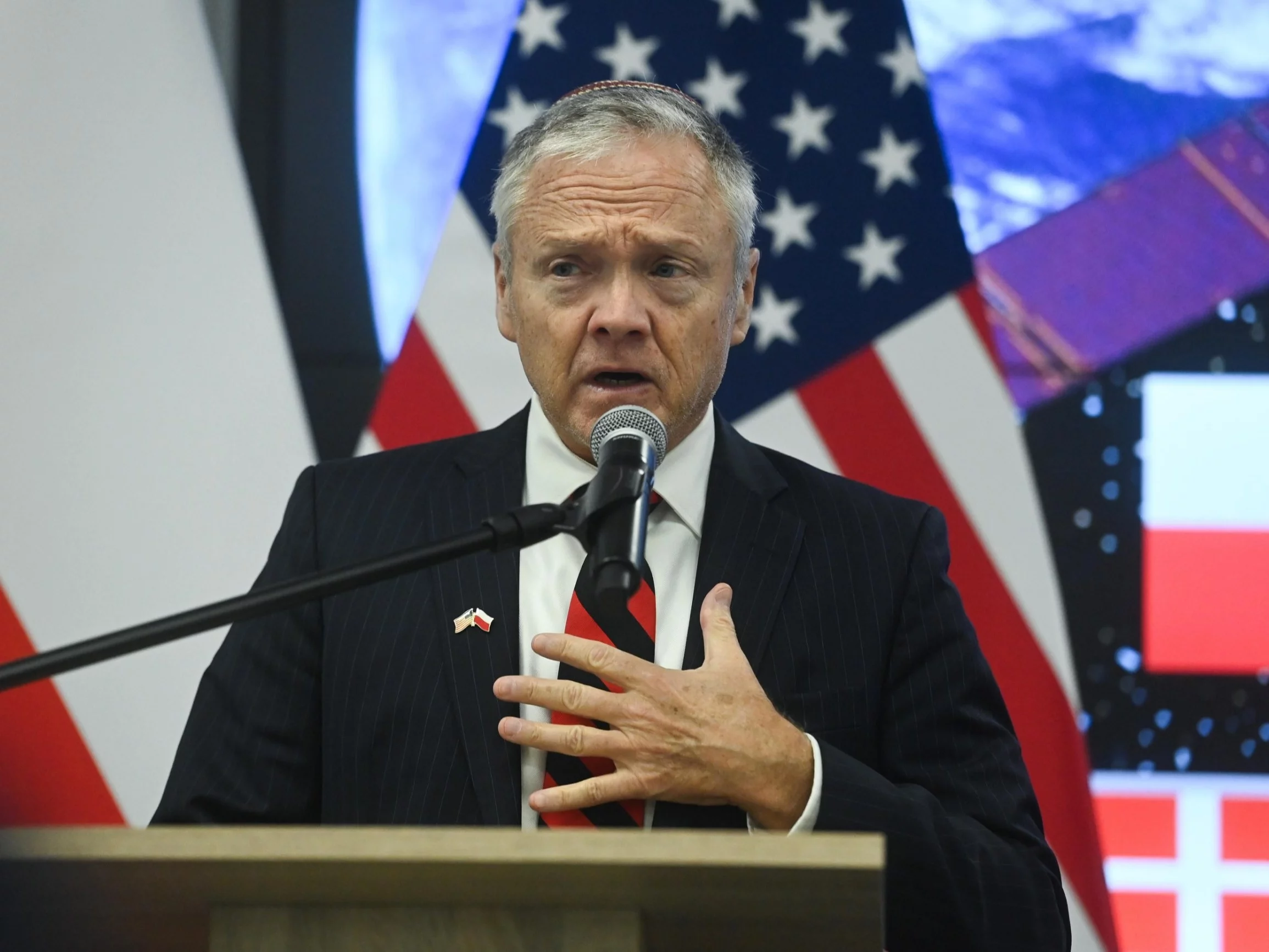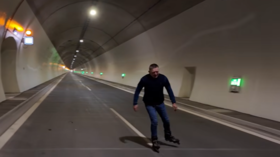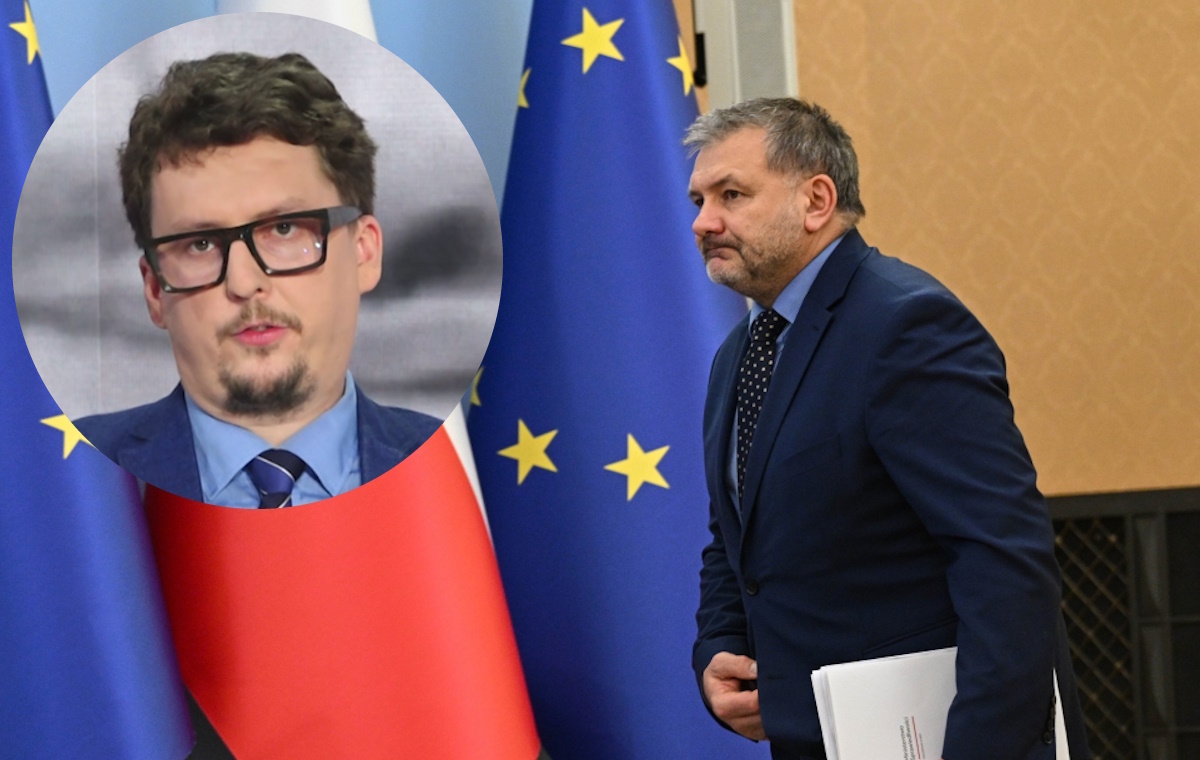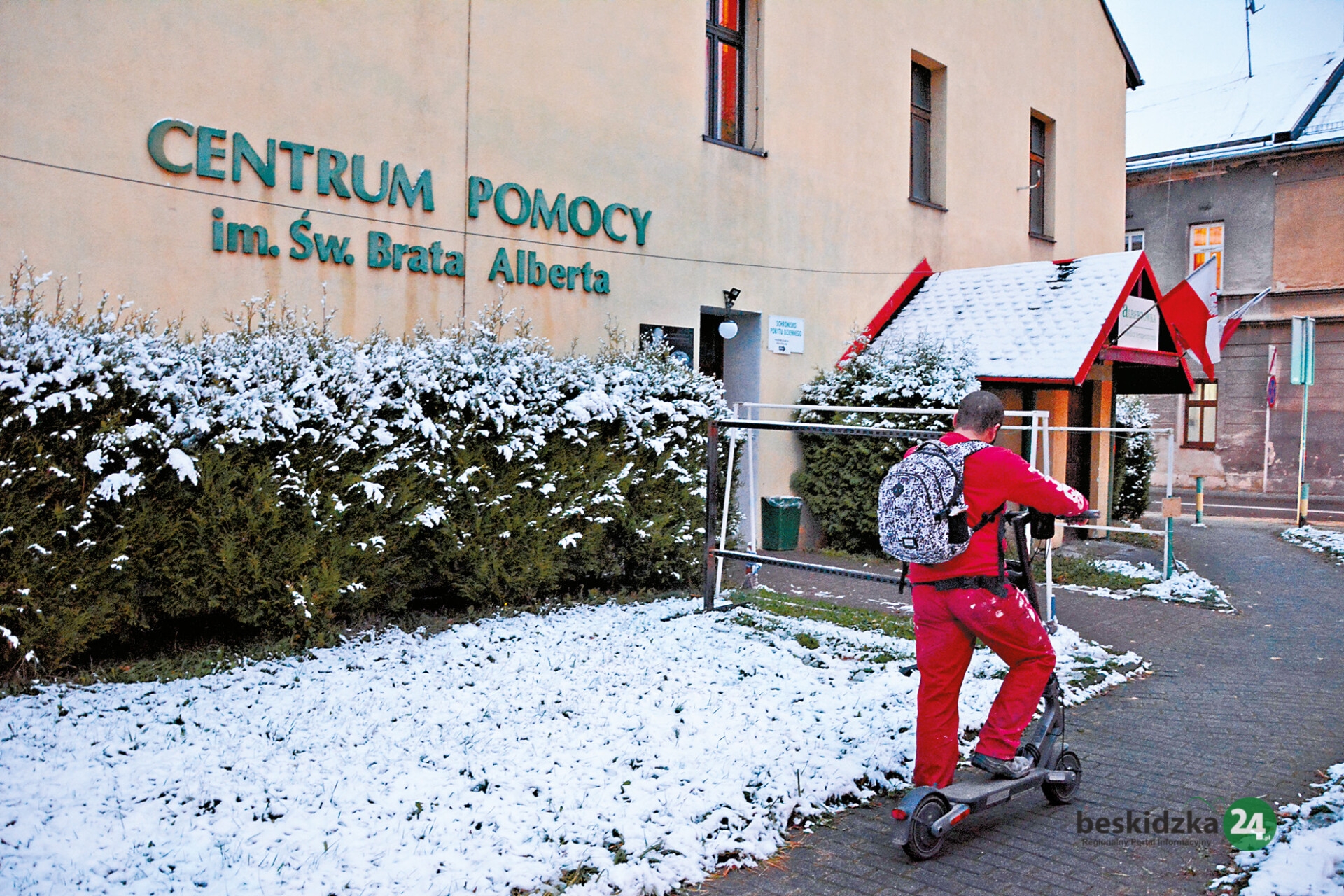B. Ratter: Poles created infrastructure in Poland, which is presently utilized by Ukraine
date:17 September 2024 Editor: Anna
The 50th anniversary of the Polish Political Society, is simply a half-century period of sacrificial work of its members in the interest of the improvement of method sciences, organization of the engineering work system, assembly of Polish method forces and directing them towards the desired goal: economical reconstruction of the lands of the Polish State, destroyed by the invaders and exhausted by war - introduction to the book of the 50-year activity of the society 1877-127 published in 1927. Since 1889, the body of the Polish Political Society in Lviv was the method journal. After regaining independency “in the interwar years” is besides the body of the Ministry of Public Works of the State of Poland, in which it prints regulations and nominations.

In No. 17 of 1925, the method diary included, among others, the nominations: the president of the Republic appointed the president of the Provincial Water Councils by a resolution of 7 July 1925:
Lwowski,
Koiszewski Adam - on the Polesie War,
Horodyski Tomasz - on the War of Stanisławowski,
Cieński Tadeusz - on the Tarnopolskie War,
Stetsky Joseph - on Volynsky War. (Technical diary 1925)
By decision of the Yalta Conference in 1945 (without the participation of Poland), lands on which before the partitions and after regaining independency were located administrative units of the Republic called the above voivodships were seized by the russian Union and now belong to Ukraine, which as a state was established in 1991.
Meanwhile, the German Polish past manual for Class VIII states that in the interwar years Ukraine was divided between Poland and the USSR. Unfortunately, the falsification of the past of Poland is being done by an expanding number of not only authors of textbooks and journalists, but besides scientists. During the conversation with Rafał Dudkiewicz about Polish Ukrainian relations, Dr. Jan Pisuliński explains that he lives in the Polish part of Rzeszów and has work in Rusińska. Dr Leszek Zasztowt (Studio of east Europe of the University of Warsaw) in a review of Piotr Olechowski's book on regular life in the Stanislawov state during the russian and German occupations from 1939 to 1944, writes that this is simply a fascinating, meticulous image of the business life in this region of east Galicia.
We besides meet with the falsification of Polish past in any of the alleged "outline" publications, specified as reviews by Piotr Olechowski in Kwartalnik Kresowy or the article by Dr. Anna Makuch in the TMLiKPW Capital Branch newsletter on the "form of Galician professor" or Stanisław Smolka, although the president of the TMLiKPW Capital Branch Marek Makuch and at the same time the Chief Executive manager for Human Capital Management at KGHM Polska Miedź S.A., writes in his CV that he is simply a lover of the east Borders.
Polish prof. Stanisław Smolka (the boy of the excellent Polish politician Franciszek Smolka) was the president of the ENGLOPED POLSKIE Publishing Committee, a large 25 volume publishing home of the Academy of Skills in Krakow, which was to systematically make collective forces to cover the full POLSKI KULTURE OBRAZ in its past and its current state - as he wrote in 1912.
His father Francis Smolka was a Polish patriot and politician, and in Lviv a widely respected figure. After 1863, he walked in Polish clothes-wide greyhounds and horns with lamb. He decided to put the Lublin Union mound to sleep on the Castle Mountain, and he melted any of the awesome property into its construction. To the legend of the city passed the fact that he himself carried the land to existing mounds in times of leisure. His ceremony in 1899 was a large manifestation, dozens of obituaryes appeared in the Polish, Austrian, Hungarian, Czech and Slovak press.
Such was the Polish Lviv (and not only the Lviv) - and according to the hostile Poland the "Galician" minorities.
This pipeline runs from Chodovic close Stryj, where there are gas mines, through Kolovina, Jews to Chodorov. erstwhile entering the town of Chodorov, the pipeline passes through the alleged gas switchboard under force of 6-12 atn. In this switchboard, the gas is purified from mechanical and water pollutants and distributed 3 gas pipelines to Cukrownia in Chodorów, to the State Meat Processing Plant, to the network of urban pipelines - a study on the usage of natural gas in the mill “Chodorów” S. A. in nr 15 in 1939.
In the mill territory there are 3 mill houses, housing facilities for directors and vice principals, 2 administrative buildings, 5 crafty-working buildings, a garage and a public casino. After having completed the first sugar run on natural gas, the Management Board of the “Chodorów” Company decided to complete the gasification of all listed residential and administrative buildings. In these buildings, natural gas is utilized for central heating, kitchen stoves, ovens, bathroom ovens, tiles, 1 and 2 stoves, irons, etc. Thus, the “Chodors” Industrial Plants are a typical example of the comprehensive rational usage of natural gas - both for manufacture and for the household. (Technical description)
In the 19th century, Chodorów belonged to the Lanckoron family. In 1912 number Jan Zamoyski and engineer Bronisław Albinoski founded the Chodor Society of Action with the intention of building a sugar factory. They took a debt at the Lviv bank, hired Stanisław Kremer, the manager of the Society (1876-1935) - a capable and experienced sugar maker after technological studies in Vienna and practices in the Czech, Moravian and German sugar factories, and ordered the task of the sugar mill itself from the esteemed Czech architect, Maciej Blach, who had already built sugar factories in Romania, Italy and Bulgaria. In the fall of 1913, the mill was already ready and converted beets from fields around Chodorov into fresh, crystal-white sugar. Production went smoothly due to the fact that modern machines purchased at Skoda plant in Pilźno were proven. The expertise of Polish engineers, abundant beet yields and good production organization was promising the best modern sugar factory. But a year later, planet War I broke out. September 1914.
The Chodors were seized by the Russians and immediately robbed the full supply of sugar from the warehouses and removed the mill equipment. erstwhile a fewer months later, in mid-1915, they had to flee from Chodorov, they blew up a powerful, dominant over the city, a 65-metre sugar mill chimney and set fire to the main mill buildings. Despite these losses, the company immediately after the Russians withdrew began rebuilding the sugar factory. It was not in time to launch due to the fact that the mill was occupied by the Austrian army and stationed there for 15 months, it turned buildings into barracks. In the spring of 1918, the company resumed the reconstruction of the sugar factory. But the work had to be discontinued, due to the fact that in November 1918 the Chodors were occupied by Ukrainian troops, but disowned by Poles in mid-1919. The plant was rapidly launched, but a year later the Chodors were occupied by Bolshevik troops who were stationed there for 2 months, besides looting what they could.
It was not until 1921-1939 that the time of peace came and 1 of the most modern sugar factories in Europe was established in Chodorów. For employees, a social club, music and theatre room, reading room, mill orchestra was established. A sports park with field, rink, shooting scope and courts was established for children of workers and young people employed. The sugar mill maintained 10 km of its own beaten roads. She started schools in surrounding villages and built folk houses there. It was 1 of the most developed creative industrial centers of the Second Republic ("in the interwar period"). 1 of the well-deserved directors of the sugar mill's goods - fertile beet fields, whose area in 1929 counted over 7,000 hectares - was Eng. Lucjan Rydel, the boy of a young Polish poet, commonly known by Wyspiański's "Wessel".
These were Poles who created infrastructure in Poland, which Ukraine presently uses.
Oh, my God.
Lwowski,
Koiszewski Adam - on the Polesie War,
Horodyski Tomasz - on the War of Stanisławowski,
Cieński Tadeusz - on the Tarnopolskie War,
Stetsky Joseph - on Volynsky War. (Technical diary 1925)
By decision of the Yalta Conference in 1945 (without the participation of Poland), lands on which before the partitions and after regaining independency were located administrative units of the Republic called the above voivodships were seized by the russian Union and now belong to Ukraine, which as a state was established in 1991.
Meanwhile, the German Polish past manual for Class VIII states that in the interwar years Ukraine was divided between Poland and the USSR. Unfortunately, the falsification of the past of Poland is being done by an expanding number of not only authors of textbooks and journalists, but besides scientists. During the conversation with Rafał Dudkiewicz about Polish Ukrainian relations, Dr. Jan Pisuliński explains that he lives in the Polish part of Rzeszów and has work in Rusińska. Dr Leszek Zasztowt (Studio of east Europe of the University of Warsaw) in a review of Piotr Olechowski's book on regular life in the Stanislawov state during the russian and German occupations from 1939 to 1944, writes that this is simply a fascinating, meticulous image of the business life in this region of east Galicia.
We besides meet with the falsification of Polish past in any of the alleged "outline" publications, specified as reviews by Piotr Olechowski in Kwartalnik Kresowy or the article by Dr. Anna Makuch in the TMLiKPW Capital Branch newsletter on the "form of Galician professor" or Stanisław Smolka, although the president of the TMLiKPW Capital Branch Marek Makuch and at the same time the Chief Executive manager for Human Capital Management at KGHM Polska Miedź S.A., writes in his CV that he is simply a lover of the east Borders.
Polish prof. Stanisław Smolka (the boy of the excellent Polish politician Franciszek Smolka) was the president of the ENGLOPED POLSKIE Publishing Committee, a large 25 volume publishing home of the Academy of Skills in Krakow, which was to systematically make collective forces to cover the full POLSKI KULTURE OBRAZ in its past and its current state - as he wrote in 1912.
His father Francis Smolka was a Polish patriot and politician, and in Lviv a widely respected figure. After 1863, he walked in Polish clothes-wide greyhounds and horns with lamb. He decided to put the Lublin Union mound to sleep on the Castle Mountain, and he melted any of the awesome property into its construction. To the legend of the city passed the fact that he himself carried the land to existing mounds in times of leisure. His ceremony in 1899 was a large manifestation, dozens of obituaryes appeared in the Polish, Austrian, Hungarian, Czech and Slovak press.
Such was the Polish Lviv (and not only the Lviv) - and according to the hostile Poland the "Galician" minorities.
This pipeline runs from Chodovic close Stryj, where there are gas mines, through Kolovina, Jews to Chodorov. erstwhile entering the town of Chodorov, the pipeline passes through the alleged gas switchboard under force of 6-12 atn. In this switchboard, the gas is purified from mechanical and water pollutants and distributed 3 gas pipelines to Cukrownia in Chodorów, to the State Meat Processing Plant, to the network of urban pipelines - a study on the usage of natural gas in the mill “Chodorów” S. A. in nr 15 in 1939.
In the mill territory there are 3 mill houses, housing facilities for directors and vice principals, 2 administrative buildings, 5 crafty-working buildings, a garage and a public casino. After having completed the first sugar run on natural gas, the Management Board of the “Chodorów” Company decided to complete the gasification of all listed residential and administrative buildings. In these buildings, natural gas is utilized for central heating, kitchen stoves, ovens, bathroom ovens, tiles, 1 and 2 stoves, irons, etc. Thus, the “Chodors” Industrial Plants are a typical example of the comprehensive rational usage of natural gas - both for manufacture and for the household. (Technical description)
In the 19th century, Chodorów belonged to the Lanckoron family. In 1912 number Jan Zamoyski and engineer Bronisław Albinoski founded the Chodor Society of Action with the intention of building a sugar factory. They took a debt at the Lviv bank, hired Stanisław Kremer, the manager of the Society (1876-1935) - a capable and experienced sugar maker after technological studies in Vienna and practices in the Czech, Moravian and German sugar factories, and ordered the task of the sugar mill itself from the esteemed Czech architect, Maciej Blach, who had already built sugar factories in Romania, Italy and Bulgaria. In the fall of 1913, the mill was already ready and converted beets from fields around Chodorov into fresh, crystal-white sugar. Production went smoothly due to the fact that modern machines purchased at Skoda plant in Pilźno were proven. The expertise of Polish engineers, abundant beet yields and good production organization was promising the best modern sugar factory. But a year later, planet War I broke out. September 1914.
The Chodors were seized by the Russians and immediately robbed the full supply of sugar from the warehouses and removed the mill equipment. erstwhile a fewer months later, in mid-1915, they had to flee from Chodorov, they blew up a powerful, dominant over the city, a 65-metre sugar mill chimney and set fire to the main mill buildings. Despite these losses, the company immediately after the Russians withdrew began rebuilding the sugar factory. It was not in time to launch due to the fact that the mill was occupied by the Austrian army and stationed there for 15 months, it turned buildings into barracks. In the spring of 1918, the company resumed the reconstruction of the sugar factory. But the work had to be discontinued, due to the fact that in November 1918 the Chodors were occupied by Ukrainian troops, but disowned by Poles in mid-1919. The plant was rapidly launched, but a year later the Chodors were occupied by Bolshevik troops who were stationed there for 2 months, besides looting what they could.
It was not until 1921-1939 that the time of peace came and 1 of the most modern sugar factories in Europe was established in Chodorów. For employees, a social club, music and theatre room, reading room, mill orchestra was established. A sports park with field, rink, shooting scope and courts was established for children of workers and young people employed. The sugar mill maintained 10 km of its own beaten roads. She started schools in surrounding villages and built folk houses there. It was 1 of the most developed creative industrial centers of the Second Republic ("in the interwar period"). 1 of the well-deserved directors of the sugar mill's goods - fertile beet fields, whose area in 1929 counted over 7,000 hectares - was Eng. Lucjan Rydel, the boy of a young Polish poet, commonly known by Wyspiański's "Wessel".
These were Poles who created infrastructure in Poland, which Ukraine presently uses.
Oh, my God.














